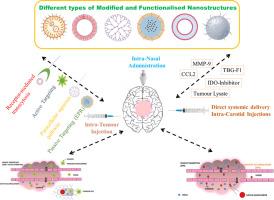Transport of nanocarriers to brain for treatment of glioblastoma multiforme: Routes and challenges
Abstract
Glioblastoma Multiforme (GBM) is one of the most infiltrative, heterogenous types of brain malignancies and is mainly associated with poor prognosis. Despite various advances in treatment regimens, conventional therapies fall short of enhancing the average life expectancy of patients. This may be mainly subjected to insufficiency of chemotherapeutics reaching the target site because of various biological barriers including the blood-brain barrier (BBB) and blood-cerebrospinal fluid barrier (BCSFB). Furthermore, to overcome such barriers nanocarriers have assisted proven to be advantageous as they enhance the bioavailability of drugs by improving blood retention time, reducing toxicity, and site-specific targeting. Internalization of nanocarriers in cells occurs via various mechanisms and aids in crossing biological barriers. Irrespective of the type of nanocarrier route of administration also has a vital role which mainly aims at providing higher bioavailability and patient compliance. Hence this review deals with various aspects relating to the transport of nanocarriers to the brain and their routes of administration for the treatment of GBM.


 求助内容:
求助内容: 应助结果提醒方式:
应助结果提醒方式:


